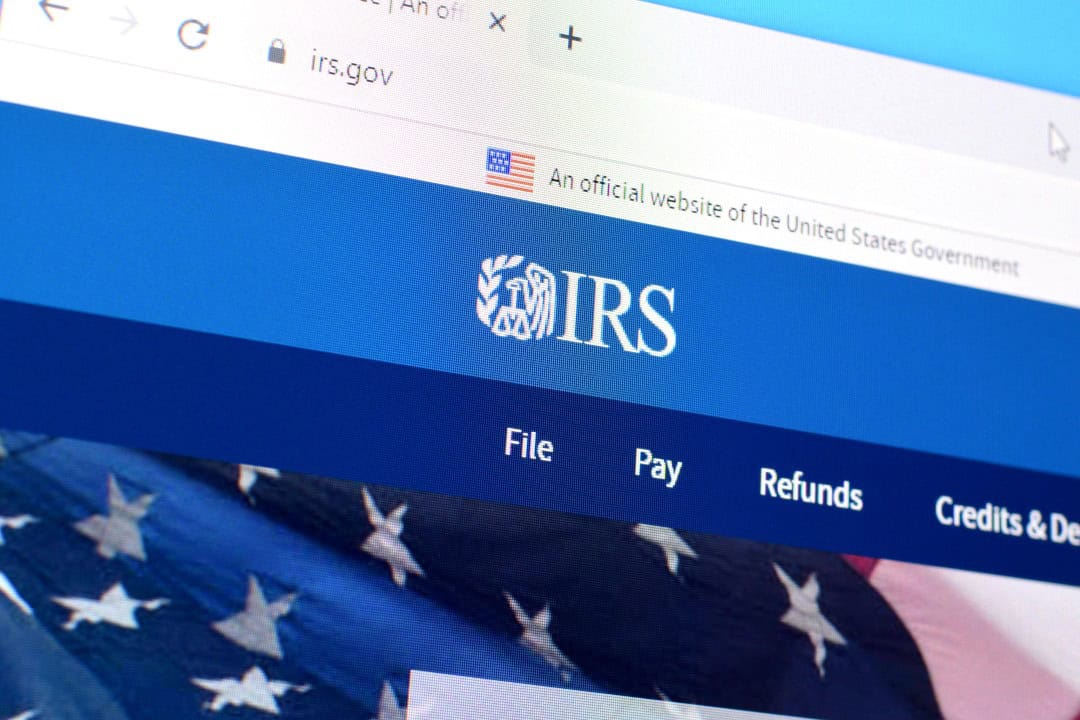Survey Reveals Americans Now Need $1.46 Million for Retirement, Up 53% Since 2020 – How Does That Compare to Actual Savings?

A survey of 4,588 adults by Northwestern Mutual found that the ideal retirement savings goal is now $1.46 million. In last year’s survey, the target was set at $1.27 million, marking a 15% increase. This figure also represents a substantial 53% rise from the $951,000 Americans thought they would need in 2020.
Generational Divide in Expectations

Generationally, both Gen Z and Millennials anticipate needing over $1.6 million to retire comfortably, while Baby Boomers and the Silent Generation say they will need only $990,000.
Social Security and Medicare Cuts

One of the reasons Gen Z and Millennials anticipate needing more money than the Baby Boomers and the Silent Generation could be the insolvency of the Social Security and Medicare Trust Funds.
As per the latest Trustees report, Social Security is expected to be insolvent in less than a decade and Medicare even sooner. Benefits are expected to be cut as soon as 2034 causing Gen Z and Millennials anxiety about their retirement.
Inflation a Cause For 53% Increase in Retirement Savings Expectations

The worst inflation in 40 years is a key reason why average Americans anticipate needing 53% more in their retirement savings compared to four years ago.
For the third consecutive year, the proportion of Americans identifying inflation or high living costs as their family’s top financial problem has hit a new peak as per the latest Gallup’s annual Economy and Personal Finance poll.
Reality Differs From Expectations

Across all generations, there’s a significant disparity between what people believe they need for retirement and what they’ve actually saved. Here’s a breakdown of current retirement savings compared to goals:
– All Americans: Average savings of $88,400, with a gap of $1.37 million to their target.
– Gen Z: Current savings stand at $22,800, falling short by $1.61 million.
– Millennials: With $62,600 saved, they face a gap of $1.59 million.
– Gen X: They have $108,600 saved, but need $1.45 million more.
– Boomers+: The group has saved $120,300, leaving a gap of $870,000 to their goal.
Gen Z Has an Early Advantage

The average American starts saving for retirement at age 31, but Gen Z begins much earlier, at age 22—a full decade ahead.
In contrast, Boomers+ started at 37, while Millennials and Gen X begin saving at ages 27 and 31, respectively.
Gen Z hopes that starting sooner will enable them to retire early, aiming for age 60. This is 12 years earlier than Boomers+, who expect to work until 72.
Millennials and Gen X plan to retire at 64 and 67, respectively, while most people anticipate working until age 65.
The research found that 30% of Millennials and Gen Z believe they have a good chance of living to age 100. This optimism is stronger in younger generations compared to Gen X and Boomers+, where only 22% and 21%, respectively, share this belief.
Not Prepared For Retirement

In 2024, over four million Americans will reach the age of 65, averaging 11,000 individuals each day—a trend that will persist until 2027. This marks the largest influx of Americans reaching traditional retirement age in history.
The 2024 Planning & Progress Study revealed that among those nearing retirement, only around half of Boomers+ (49%) and Gen X (48%) feel they will be financially ready when the time comes.
On average, Gen X estimates a 42% likelihood of outliving their savings, while Boomers+ believe the probability is around 37%.
In both generations, over a third (37% and 38%, respectively) have yet to take any action to mitigate the risk of depleting their savings.
Steps to Boost Retirement Savings

1. Automate Contributions: Set up automatic transfers from your paycheck or bank account into your retirement savings accounts. This ensures consistent contributions and allows your savings to grow steadily over time.
2. Take Advantage of Employer Matches: If your employer offers a retirement plan with a matching contribution, maximize your contributions to receive the full match. This is essentially free money that can significantly boost your retirement savings.
3. Increase Contributions Over Time: Gradually raise your retirement contributions each year, particularly when you receive raises or bonuses. Even small increases can add up over time and make a big difference to your nest egg.
4. Utilize Tax-Advantaged Accounts: Contribute to retirement accounts like 401(k)s, IRAs, or HSAs, which offer tax advantages that can help your savings grow more efficiently.
5. Review and Adjust Investments: Regularly review your investment portfolio and adjust your asset allocation as needed. This can help optimize your returns and ensure your investments align with your risk tolerance and retirement goals.
Plan For Taxes in Retirement

Unfortunately taxes still continue in retirement. The tax hit can be magnified if most of your retirement savings are in pre-tax accounts such as 401(k)s and IRAs.
Only 30% of Americans have a strategy to minimize taxes on their retirement savings as per the Northwestern Mutual survey. Among those who do have a strategy, the top 10 methods used include:
– Withdrawing strategically from traditional and Roth accounts to stay in a lower tax bracket (32%).
– Using a combination of traditional and Roth retirement accounts (30%).
– Making strategic charitable donations (24%).
– Leveraging a Health Savings Account (HSA) or other tax-advantaged healthcare accounts (23%).
– Utilizing products like permanent life insurance or annuities for tax benefits (22%).
– Performing Roth conversions before taking required minimum distributions (RMDs) or Social Security (19%).
– Employing qualified charitable distributions from an IRA (17%).
– Contributing to other tax-advantaged accounts like a 529 plan (14%).
– Using the basis in permanent life insurance to stay in a lower tax bracket (13%).
– Opting for a Qualified Longevity Annuity Contract (QLAC) to allocate funds for later retirement (13%).
Work with a qualified tax professional to ensure you optimize your plan.
Charting the Path to Financial Security

The survey underscores the significant challenges Americans face in achieving their retirement goals. With rising inflation worries as per the Gallup poll, Social Security uncertainties, and the disparity between expected and actual savings, planning for retirement requires proactive measures.
Gen Z’s early start on saving is a promising trend, yet older generations face a daunting task to catch up. By adopting strategies such as automating contributions and leveraging tax-advantaged accounts, individuals can bridge the gap between their savings and retirement targets. Engaging with a qualified tax professional is crucial to navigate the complexities of retirement planning successfully.
Like Financial Freedom Countdown content? Be sure to follow us!
Nearly a Million People Risk Losing Over $1 Billion in Unclaimed 2020 Tax Refunds If They Don’t Act by May 17

Tick tock, the clock is counting down for nearly a million Americans who stand on the brink of losing out on a staggering sum of over $1 billion in unclaimed tax refunds from 2020. With the May 17 deadline looming, it’s a race against time to secure what’s rightfully yours.
The 10 States Taxing Social Security in 2024 and the 2 That Just Stopped

As 2023 tax filing season draws to a close, retirees across the nation are adjusting their financial plans for 2024, but a crucial detail could drastically alter the landscape of retirement living: the taxing of Social Security benefits. While many bask in the belief that their golden years will be tax-friendly, residents in nine specific states are facing a reality check as their Social Security benefits come under the taxman’s purview. Conversely, a wave of relief is set to wash over two states, marking an end to their era of taxing these benefits. This shift paints a complex portrait of retirement planning across the U.S., underscoring the importance of staying informed of the ever changing tax laws. Are you residing in one of these states? It’s time to uncover the impact of these tax changes on your retirement strategy and possibly reconsider your locale choice for those serene post-work years. Here are the 9 states taxing social security benefits.
The States Taxing Social Security in 2024 and the 2 That Just Stopped
Shift From Employee to Investor Mindset with the Cashflow Quadrant Methodology by Robert Kiyosaki

Countless systems have been established that provide a much better understanding of what income generation is, how it can be used, and how individuals can organize their financial life as they work towards financial freedom. One of the more successful and better-known examples of financial education is the Cashflow Quadrant, the book by Robert Kiyosaki. Rich Dad’s Cashflow Quadrant was revolutionary for the way it organized money and helped people better learn how to increase their income. As the name implies, there are four quadrants within the Cashflow Quadrant. By mastering each of the four categories – or specializing in one – a person can increase their revenue stream and ultimately make more money.
Shift From Employee to Investor Mindset with the Cashflow Quadrant Methodology by Robert Kiyosaki
Retire Abroad and Still Collect Social Security? Avoid These 9 Countries Where It’s Not Possible

Dreaming of retiring to a sun-drenched beach or a quaint village? Many Americans envision spending their golden years abroad, savoring the delights of new cultures and landscapes. However, an essential part of this dream hinges on the financial stability provided by Social Security benefits. Before packing your bags and bidding farewell, it’s crucial to know that not all countries play by the same rules when it comes to collecting these benefits overseas. Here are the nine countries where your dream of retiring abroad could hit a snag, as Social Security benefits don’t cross every border. Avoid living in these countries so your retirement plans don’t get lost in translation.
Retire Abroad and Still Collect Social Security? Avoid These 9 Countries Where It’s Not Possible
Treasury Sets I Bond Rate at 4.28%. Are I Bonds Still Worth Your Investment?

Inflation is a silent killer. With the rapid rise in inflation over the last two years, I bonds became an attractive, safe investment. With the government reporting lower CPI numbers lately, the composite rate of I bonds at 4.28% is less attractive than when investors purchased them at an annual rate of 9.62% in May 2022. Given the lower rates, investors are now considering whether they should continue buying or selling existing Series I bonds.
Treasury Sets I Bond Rate at 4.28%. Are I Bonds Still Worth Your Investment?
Maximize Your Benefits: Essential Social Security Strategies for Singles

While singles may have fewer Social Security filing options than married couples, smart planning around when to claim benefits can pay off for anyone, including those flying solo.
Maximize Your Benefits: Essential Social Security Strategies for Singles

John Dealbreuin came from a third world country to the US with only $1,000 not knowing anyone; guided by an immigrant dream. In 12 years, he achieved his retirement number.
He started Financial Freedom Countdown to help everyone think differently about their financial challenges and live their best lives. John resides in the San Francisco Bay Area enjoying nature trails and weight training.
Here are his recommended tools
M1 Finance: John compared M1 Finance against Vanguard, Schwab, Fidelity, Wealthfront and Betterment to find the perfect investment platform. He uses it due to zero fees, very low minimums, automated investment with automatic rebalancing. The pre-built asset allocations and fractional shares helps one get started right away.
Personal Capital: This is a free tool John uses to track his net worth on a regular basis and as a retirement planner. It also alerts him wrt hidden fees and has a budget tracker included.
Streitwise is available for accredited and non-accredited investors. They have one of the lowest fees and high “skin in the game,” with over $5M of capital invested by founders in the deals. It is also open to foreign/non-USA investor. Minimum investment is $5,000.
Platforms like Yieldstreet provide investment options in art, legal, structured notes, venture capital, etc. They also have fixed-income portfolios spread across multiple asset classes with a single investment with low minimums of $10,000.






